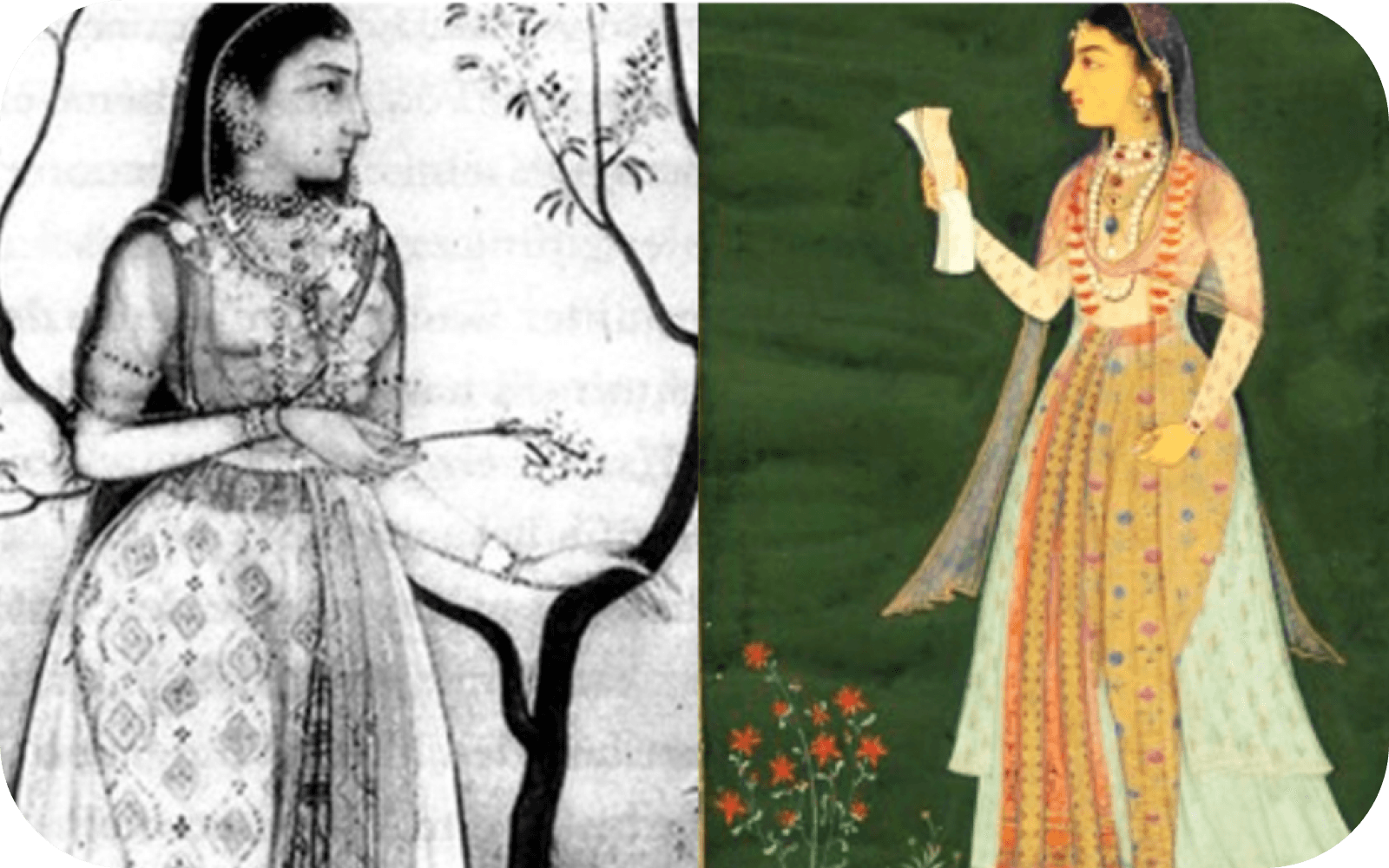Go Back
HER STORY
In our series on Standing On The Shoulders Of The Giants, we bring to you the story of - Jahanara Begum. The independence and sway she possessed in the public-private sphere of the Mughal Empire is worth romanticising.
Sneha Khatri
Apr 8, 2022
Jahanara Begum was a Mughal princess and the Padshah Begum of the Mughal Empire. She was the second and eldest surviving child of Emperor Shah Jahan and Mumtaz Mahal. Jahanara took on significant responsibilities after her mother’s death in 1631, becoming the de facto First Lady of the Empire despite her father having multiple wives. She was a powerful political figure under Shah Jahan's rule. She had the entire kingdom under her control. She defied the society by staying unmarried.
Heading
Jahanara’s position as the Padshah Begum gave her considerable influence over economic affairs due to her control over affixing the imperial seal to all royal edicts. This role allowed her to wield power and authority in financial transactions and trade agreements on behalf of the Mughal Empire. She was in charge of all personal financial resources because her father, Shah Jahan, had great faith in her at the imperial court (Balabanlilar 2010, 141). She had had more liquid cash at her disposal than any other Mughal woman in history. Shah Jahan gave her the profits from Surat, the most lucrative port in the empire. Surat was a bustling commercial hub that attracted tourists from all over the world. Every year, hundreds of pilgrims would congregate to make the journey to Mecca, where Indian traders and bankers, both Muslims and Hindus, flourished. An account from today states that the port brought in an incredible Rs 7.5 lakh annually. (Bano (2005), 431.) Jahanara's generosity toward major public charities, saints, building projects, and artwork is a testament to her wealth and self-made influence. Throughout her life, Jahanara managed this wealth wisely, using it not only to support herself but also to contribute to various architectural and religious projects. She played a crucial role in designing Chandni Chowk in Old Delhi and facilitated trade with Dutch merchants, further enhancing the prosperity and influence of the Mughal capital. With her own funds, she also constructed the biggest bathhouse and a caravanserai, dubbed "the most imposing structure in the city after the Jami Masjid." 141 (Balabanlilar, 2010).

The fact that some women in medieval India managed to establish themselves in politics, gave advice on important matters, wrote historical accounts and controlled financial movements in spite of the restrictions imposed by harem and purdah is a testament of their outstanding achievements.

